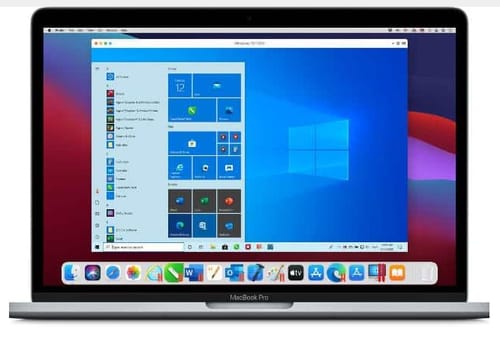 |
| You are now ready to run Windows 11 on your Mac |
Windows 11 from Microsoft can now run on Apple Mac computers, even those without Boot Camp.
Parallels is known for its default software that lets you run Windows and Linux right from your Mac.
Parallels Desktop 17 allows Mac users to experience the next version of Windows in a window that stretches across the Mac desktop.
The software supports both Intel platforms and M1 Macs (although there is a special feature for those using arm-based devices). It can even be used to run a Windows 11 preview for those who can't wait.
The problem for M1 users is the same as when Parallels started supporting the latest Apple devices. You can only emulate an Arm based operating system, which means you can only use Windows with Arm.
While it seems possible to install a preview build of Windows 11 for Arm devices, you may need to proceed with caution. Emulating Windows via Arm x86 is a bit tricky, and emulation of x64 apps is still going on.
If you want to run the standard edition of Windows over the M1, you still need to deal with the same warnings as when running Windows on other Arm machines.
Although M1 users will need to manage Windows through Arm, they will also benefit from performance improvements when using Parallels Desktop 16.
The company said: The new version increases the performance of DirectX 11 on the Mac M1 computer by 28%. Windows 10 startup time on Arm devices reduced by 33%.
This was followed by 2D graphics that increased speed by 25%. OpenGL performance can be increased up to 6 times. This applies to all supported Windows virtual machines such as Mac, Intel, and M1, according to the company.
You are now ready to run Windows 11 on your Mac
Due to the standard TPM module, M1 users can also use BitLocker and Secure Boot.
Parallels Desktop 17 has more improvements as it is now a general purpose app. It also supports macOS Monterey.
Virtualization software can run on macOS 12 computers and also create virtual machines.
Like most software today, Parallels Desktop 17 is sold as a subscription. If you want the standard edition of Parallels Desktop 17, you can subscribe for $79.99 annually or purchase a perpetual license for $99.99.
If you had a perpetual license to a previous version of Parallels Desktop, you can upgrade to Parallels Desktop 17 for $49.99. There are also professional and commercial versions that cost $99.99 per year.
Parallels sells the software on its website. But it's worth waiting for the release of Windows 11 (maybe October) to see how it works in Parallels.
